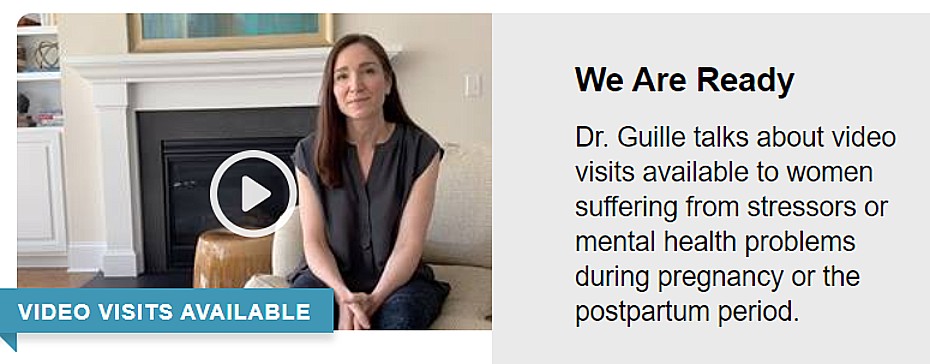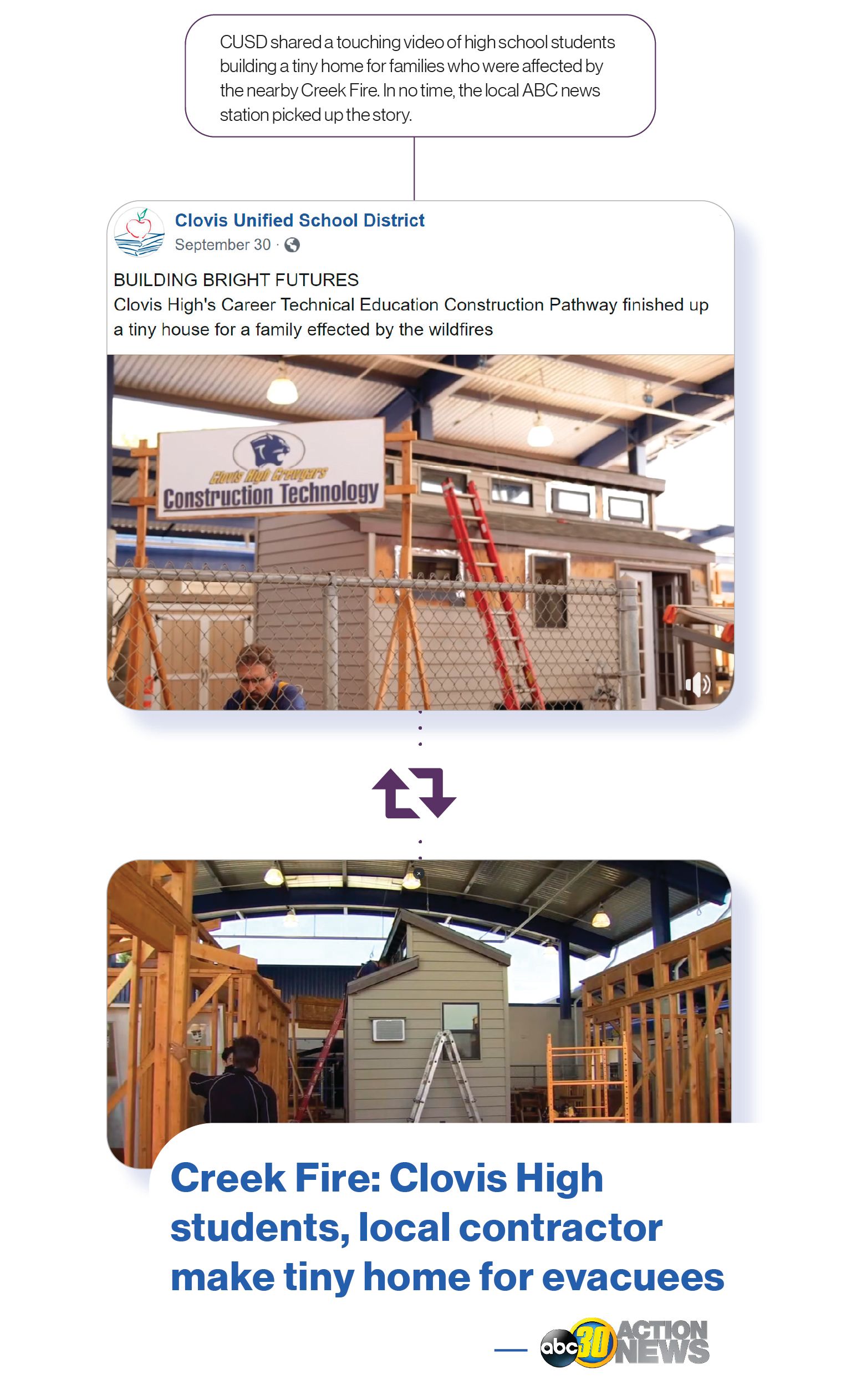On December 1, 2020, the Centers for Medicare & Medicaid Services (CMS) issued a final rule that includes updates on policy changes for Medicare payments under the Physician Fee Schedule (PFS), and other Medicare Part B issues, on or after January 1, 2021.
The calendar year (CY) 2021 PFS final rule is one of several rules that reflect a broader Administration-wide strategy to create a healthcare system that results in better accessibility, quality, affordability, empowerment, and innovation.
Background on the Physician Fee Schedule
Since 1992, Medicare has paid for the services of physicians and other billing professionals under the PFS. Physicians’ services paid under the PFS are furnished in a variety of settings, including physician offices, hospitals, ambulatory surgical centers, skilled nursing facilities and other post-acute care settings, hospices, outpatient dialysis facilities, clinical laboratories, and beneficiaries’ homes. Payment under the PFS is also made to several types of suppliers for technical services, often in settings for which no institutional payment is made. For most services furnished in a physician’s office, Medicare makes payment to physicians and other professionals at a single rate based on the full range of resources involved in furnishing the service. In contrast, PFS rates paid to physicians and other billing practitioners in facility settings, such as a hospital outpatient department (HOPD) or an ambulatory surgical center, reflect only the portion of the resources typically incurred by the practitioner in the course of furnishing the service. For many diagnostic tests and a limited number of other services under the PFS, separate payment can be made for the professional and technical components of services. The technical component is frequently billed by suppliers like independent diagnostic testing facilities and radiation treatment centers, while the professional component is billed by the physician or practitioner.
Payments are based on the relative resources typically used to furnish the service. Relative value units (RVUs) are applied to each service for physician work, practice expense, and malpractice. These RVUs become payment rates through the application of a conversion factor. Payment rates are calculated to include an overall payment update specified by statute.
PAYMENT PROVISIONS
CY 2021 PFS Ratesetting and Conversion Factor
CMS is finalizing a series of standard technical proposals involving practice expense, including the implementation of the third year of the market-based supply and equipment pricing update, and standard rate-setting refinements to update premium data involving malpractice expense and geographic practice cost indices (GPCIs).
With the budget neutrality adjustment, as required by law, to account for changes in RVUs including significant increases for E/M visit codes, the final CY 2021 PFS conversion factor is $32.41, a decrease of $3.68 from the CY 2020 PFS conversion factor of $36.09. The PFS conversion factor reflects the statutory update of 0.00 percent and the adjustment necessary to account for changes in relative value units and expenditures that would result from finalized policies.
Medicare Telehealth and Other Services Involving Communications Technology
For CY 2021, we are finalizing the addition of the following list of services to the Medicare telehealth list on a Category 1 basis. Services added to the Medicare telehealth list on a Category 1 basis are similar to services already on the telehealth list:
- Group Psychotherapy (CPT code 90853)
- Psychological and Neuropsychological Testing (CPT code 96121)
- Domiciliary, Rest Home, or Custodial Care services, Established patients (CPT codes 99334-99335)
- Home Visits, Established Patient (CPT codes 99347-99348)
- Cognitive Assessment and Care Planning Services (CPT code 99483)
- Visit Complexity Inherent to Certain Office/Outpatient Evaluation and Management (E/M) (HCPCS code G2211)
- Prolonged Services (HCPCS code G2212)
Additionally, we are finalizing the creation of a third temporary category of criteria for adding services to the list of Medicare telehealth services. Category 3 describes services added to the Medicare telehealth list during the public health emergency (PHE) for the COVID-19 pandemic (COVID-19 PHE) that will remain on the list through the calendar year in which the PHE ends.
We sought comment on services added on an interim basis to the Medicare telehealth list during the COVID-19 PHE that CMS did not propose to add to the Medicare telehealth list permanently or temporarily on a category 3 basis. Based on those comments we are finalizing the addition of a number of services to the Medicare telehealth list on a category 3 basis.
We are finalizing the addition of the following list of services to the Medicare telehealth list on a Category 3 basis:
- Domiciliary, Rest Home, or Custodial Care services, Established patients (CPT codes 99336-99337)
- Home Visits, Established Patient (CPT codes 99349-99350)
- Emergency Department Visits, Levels 1-5 (CPT codes 99281-99285)
- Nursing facilities discharge day management (CPT codes 99315-99316)
- Psychological and Neuropsychological Testing (CPT codes 96130-96133; CPT codes 96136-96139)
- Therapy Services, Physical and Occupational Therapy, All levels (CPT codes 97161-97168; CPT codes 97110, 97112, 97116, 97535, 97750, 97755, 97760, 97761, 92521-92524, 92507)
- Hospital discharge day management (CPT codes 99238-99239)
- Inpatient Neonatal and Pediatric Critical Care, Subsequent (CPT codes 99469, 99472, 99476)
- Continuing Neonatal Intensive Care Services (CPT codes 99478-99480)
- Critical Care Services (CPT codes 99291-99292)
- End-Stage Renal Disease Monthly Capitation Payment codes (CPT codes 90952, 90953, 90956, 90959, 90962)
- Subsequent Observation and Observation Discharge Day Management (CPT codes 99217; CPT codes 99224-99226)
In response to stakeholders who have stated that the once every 30-day frequency limitation for subsequent nursing facility (NF) visits furnished via Medicare telehealth provides unnecessary burden and limits access to care for Medicare beneficiaries in this setting, we proposed to revise the frequency limitation from one visit every 30 days to one visit every 3 days. We also sought comment on whether it would enhance patient access to care if we were to remove frequency limitations altogether, and how best to ensure that patients would continue to receive necessary in-person care. Based on information from commenters about creating a disincentive for in-person care and after additional consideration of how patients in the NF setting, in general, tend to have longer lengths of stay when compared to patients in the inpatient setting, we reconsidered, including considering whether the frequency limitations for subsequent visits furnished via telehealth in the NF setting should be the same as in the inpatient setting. We are therefore finalizing a frequency limitation for subsequent NF telehealth visits of one visit every 14 days.
We also clarified that licensed clinical social workers, clinical psychologists, physical therapists (PTs), occupational therapists (OTs), and speech-language pathologists (SLPs) can furnish the brief online assessment and management services as well as virtual check-ins and remote evaluation services. In order to facilitate billing by these practitioners for the remote evaluation of patient-submitted video or images and virtual check-ins (HCPCS codes G2010 and G2012), we are establishing two new HCPCS G codes.
We have also received questions as to whether services should be reported as telehealth when the individual physician or practitioner furnishing the service is in the same location as the beneficiary; for example, if the physician or practitioner furnishing the service is in the same institutional setting but is utilizing telecommunications technology to furnish the service due to exposure risks. We are, therefore, reiterating in this final rule that telehealth rules do not apply when the beneficiary and the practitioner are in the same location even if audio/video technology assists in furnishing a service.
In the March 31, 2020 COVID-19 interim final rule with comment (IFC), we established separate payment for audio-only telephone (E/M) services. While we did not propose to continue to recognize these codes for payment under the PFS in the absence of the COVID-19 PHE, we noted that the need for audio-only interactions could remain as beneficiaries continue to try to avoid sources of potential infection, such as a doctor’s office. We sought comment on whether CMS should develop coding and payment for a service similar to the virtual check-in but for a longer unit of time and consequently with a higher value. We also sought input from the public on the duration of the services and the resources in both work and practice expense involved in furnishing this service. We sought comment on whether this should be a provisional policy to remain in effect until a year after the end of the COVID-19 PHE, or should be adopted as permanent PFS payment policy. Based on support from commenters we are establishing payment on an interim final basis for a new HCPCS G-code describing 11-20 minutes of medical discussion to determine the necessity of an in-person visit.
Remote Physiologic Monitoring Services
In recent years, CMS has finalized payment for seven remote physiologic monitoring (RPM) codes. In response to stakeholder questions about RPM, CMS clarified in the CY 2021 PFS final rule our payment policies related to the RPM services described by CPT codes 99453, 99454, 99091, 99457, and 99458. In addition, we finalized as permanent policy two modifications to RPM services that we finalized in response to the COVID-19 PHE.
- We clarified that after the COVID-19 PHE ends, there must be an established patient-physician relationship for RPM services to be furnished.
- We finalized that consent to receive RPM services may be obtained at the time that RPM services are furnished.
- We finalized that auxiliary personnel may provide services described by CPT codes 99453 and 99454 incident to the billing practitioner’s services and under their supervision. Auxiliary personnel may include contracted employees.
- We clarified that the medical device supplied to a patient as part of RPM services must be a medical device as defined by Section 201(h) of the Federal Food, Drug, and Cosmetic Act, that the device must be reliable and valid, and that the data must be electronically (i.e., automatically) collected and transmitted rather than self-reported.
- We clarified that after the COVID-19 PHE ends, 16 days of data each 30 days must be collected and transmitted to meet the requirements to bill CPT codes 99453 and 99454.
- We clarified that only physicians and NPPs who are eligible to furnish E/M services may bill RPM services.
- We clarified that RPM services may be medically necessary for patients with acute conditions as well as patients with chronic conditions.
- We clarified that for CPT codes 99457 and 99458, an “interactive communication” is a conversation that occurs in real-time and includes synchronous, two-way interactions that can be enhanced with video or other kinds of data as described by HCPCS code G2012. We further clarified that the 20-minutes of time required to bill for the services of CPT codes 99457 and 99458 can include time for furnishing care management services as well as for the required interactive communication.
Immunization Services
In the CY 2021 PFS final rule we are maintaining payment rates for immunization administration services described by CPT codes 90460, 90461, 90471, 90472, 90473, and 90474, and HCPCS codes G0008, G0009, and G0010 at their CY 2019 payment levels in consideration of payment stability for stakeholders, public health concerns and the importance of these services for Medicare beneficiaries.
Direct Supervision by Interactive Telecommunications Technology
For the duration of the COVID-19 PHE, for purposes of limiting exposure to COVID-19, we adopted an interim final policy revising the definition of direct supervision to include virtual presence of the supervising physician or practitioner using interactive audio/video real-time communications technology (85 FR 19245). We recognized that in some cases, the physical proximity of the physician or practitioner might present additional infection exposure risk to the patient and/or practitioner.
In the CY 2021 PFS proposed rule, CMS proposed to allow direct supervision to be provided using real-time, interactive audio and video technology (excluding telephone that does not also include video) through the later of the end of the calendar year in which the PHE ends or December 31, 2021. We sought information from commenters as to whether there should be any guardrails in effect if we finalize this policy through the year in which the PHE ends or December 31, 2021, or if we were to consider it beyond the time specified and what risks this policy might introduce to beneficiaries as they receive care from practitioners that would supervise care virtually in this way. In addition to comments regarding patient safety/clinical appropriateness, we also sought comment on potential concerns around induced utilization and fraud, waste, and abuse and how those concerns might be addressed.
After consideration of public comment, we are finalizing that direct supervision may be provided using real-time, interactive audio and video technology through the later of the end of the calendar year in which the PHE ends or December 31, 2021.
Payment for Office/Outpatient Evaluation and Management (E/M) and Analogous Visits
As finalized in the CY 2020 PFS final rule, in CY 2021 we will be largely aligning our E/M visit coding and documentation policies with changes laid out by the CPT Editorial Panel for office/outpatient E/M visits, beginning January 1, 2021. We are finalizing revisions to the times used for rate-setting for the office/outpatient E/M visit code set.
We are finalizing revaluation of the following code sets that include, rely upon or are analogous to office/outpatient E/M visits commensurate with the increases in values we finalized for office/outpatient E/M visits for CY 2021:
- End-Stage Renal Disease (ESRD) Monthly Capitation Payment (MCP) Services
- Transitional Care Management (TCM) Services
- Maternity Services
- Cognitive Impairment Assessment and Care Planning
- Initial Preventive Physical Examination (IPPE) and Initial and Subsequent Annual Wellness Visits (AWV)
- Emergency Department Visits
- Therapy Evaluations
- Psychiatric Diagnostic Evaluations and Psychotherapy Services
We are also clarifying the definition of HCPCS add-on code G2211(formerly referred to as GPC1X), previously finalized for office/outpatient E/M visit complexity, and refining our utilization assumptions for this code. In the proposed rule, we assumed that this code would be reported with 100% of office/outpatient E/M visits by specialties that rely on office/outpatient E/M visits to report the majority of their services. Because we think it may take some time for practitioners to begin reporting HCPCS add-on code G2211, for CY 2021, we are assuming that it will be reported with 90% of office/outpatient E/M visits by specialties that rely on office/outpatient E/M visits to report the majority of their services.
We are also finalizing separate payment for a new HCPCS code, G2212, describing prolonged office/outpatient E/M visits to be used in place of CPT code 99417 (formerly referred to as CPT code 99XXX) to clarify the times for which prolonged office/outpatient E/M visits can be reported.
Policies Regarding Professional Scope of Practice and Related Issues
- Supervision of Diagnostic tests by Certain Nonphysician Practitioners (NPPs)
CMS is finalizing our proposal to make permanent following the COVID-19 PHE, the same policy that was finalized under the May 1, 2020 COVID-19 IFC (85 FR 27550 through 27629) for the duration of the COVID-19 PHE to allow nurse practitioners (NPs), clinical nurse specialists (CNSs), physician assistants (PAs), and certified nurse-midwives (CNMs) to supervise the performance of diagnostic tests within their scope of practice and state law. We are adding certified registered nurse anesthetists (CRNAs) to this list. These practitioners must maintain the required statutory relationships under Medicare with supervising or collaborating physicians.
- Pharmacists Providing Services Incident to Physicians’ Services
CMS is reiterating the clarification provided in the May 1, 2020 COVID-19 IFC (85 FR 27550 through 27629), that pharmacists may fall within the regulatory definition of auxiliary personnel under our “incident to” regulations. As such, pharmacists may provide services incident to the services, and under the appropriate level of supervision, of the billing physician or NPP, if payment for the services is not made under the Medicare Part D benefit. This includes providing the services incident to the services of the billing physician or NPP and in accordance with the pharmacist’s state scope of practice and applicable state law.
- Therapy Assistants Furnishing Maintenance Therapy
In the CY 2021 PFS final rule, CMS finalized the Part B policy for maintenance therapy services that was adopted on an interim basis for the PHE in the May 1, 2020 COVID-19 IFC (85 FR 27556). This finalized policy allows physical therapists (PT) and occupational therapists (OT) to delegate the furnishing of maintenance therapy services, as clinically appropriate, to a physical therapy assistant (PTA) or an occupational therapy assistant (OTA). This Part B policy allows PTs/OTs to use the same discretion to delegate maintenance therapy services to PTAs/OTAs that they utilize for rehabilitative services.
- Medical Record Documentation
In the CY 2020 PFS final rule, CMS finalized broad modifications to the medical record documentation requirements for physicians and certain NPPs. In this CY 2021 PFS final rule, we are clarifying that physicians and NPPs, including therapists, can review and verify documentation entered into the medical record by members of the medical team for their own services that are paid under the PFS. We are also clarifying that therapy students, and students of other disciplines, working under a physician or practitioner who furnishes and bills directly for their professional services to the Medicare program, may document in the record so long as the documentation is reviewed and verified (signed and dated) by the billing physician, practitioner, or therapist.
- PFS Payment for Services of Teaching Physicians and Resident “Moonlighting” Services
For residency training sites of a teaching setting that are outside of a metropolitan statistical area (MSA), the CY 2021 PFS final rule established a policy to allow teaching physicians to use interactive, real-time audio/video to interact with the resident through virtual means in order to meet the requirement that they be present for the key portion of the service, including when the teaching physician involves the resident in furnishing Medicare telehealth services. In addition, for residency training sites of a teaching setting that are outside of an MSA, the CY 2021 PFS final rule allows teaching physicians involving residents in providing care at primary care centers to provide the necessary direction, management and review for the resident’s services using interactive, real-time audio/video communications technology. For these sites, residents furnishing services at primary care centers may furnish an expanded set of services to beneficiaries, including communication technology-based services and inter-professional consults.
These flexibilities do not apply in the case of surgical, high risk, interventional, or other complex procedures, services performed through an endoscope, and anesthesia services. Further, in order to ensure that the teaching physician renders sufficient personal and identifiable physicians’ services to the patient to exercise full, personal control over the management of the portion of the case for which the payment is sought, in accordance with section 1842(b)(7)(A)(i)(I) of the Act, the medical record must clearly reflect how the teaching physician was present to the resident during the key portion of the service. For example, the medical record could document the physical or virtual presence of the teaching physician during the key portion of the service.
Finally, the CY 2021 PFS final rule permanently expanded the settings in which residents may moonlight to include the services of residents that are not related to their approved GME programs and which are furnished to inpatients of a hospital in which they have their training program. In order to prevent the potential duplication of payment with the Inpatient Prospective Payment System (IPPS) for GME, and regardless of whether the resident’s services are performed in the outpatient department, emergency department or inpatient setting of a hospital in which they have their training program, the medical record must show that the resident furnished identifiable physician services that meet the conditions of payment of physician services to beneficiaries in providers in § 415.102(a); that the resident is fully licensed to practice medicine, osteopathy, dentistry, or podiatry by the State in which the services are performed; and that the services are not performed as part of the approved GME program.
Medicare Coverage for Opioid Use Disorder Treatment Services Furnished by Opioid Treatment Programs (OTPs)
Section 2005 of the Substance Use–Disorder Prevention that Promotes Opioid Recovery and Treatment for Patients and Communities (SUPPORT) Act established a new Medicare Part B benefit category for opioid use disorder (OUD) treatment services, including medications for medication-assisted treatment (MAT), furnished by opioid treatment programs (OTPs) during an episode of care beginning on or after January 1, 2020. As part of CY 2020 PFS rulemaking, CMS implemented coverage requirements and established new coding and payment describing a bundled episode of care for treatment of OUD furnished by OTPs.
In the CY 2021 PFS final rule, CMS is finalizing the proposal to extend the definition of OUD treatment services to include opioid antagonist medications, specifically naloxone, that are approved by Food and Drug Administration under section 505 of the Federal Food, Drug, and Cosmetic Act for emergency treatment of opioid overdose, as well as overdose education. CMS is also finalizing the proposed creation of a new add-on code to cover the cost of providing patients with nasal naloxone and pricing this code based upon the methodology set forth in section 1847A of the Act, except that the payment amount shall be average sales price (ASP) + 0. Since auto-injector naloxone is no longer available in the marketplace, CMS is instead finalizing a second new add-on code to cover the cost of providing patients with injectable naloxone and is contractor pricing this code for CY 2021. CMS is finalizing the proposal to apply a frequency limit on the codes describing naloxone, but allowing exceptions in the case where the beneficiary overdoses and uses the supply of naloxone given to them by the OTP, to the extent that the additional supply of naloxone is medically reasonable and necessary. Additionally, CMS is finalizing our proposal to allow periodic assessments to be furnished via two-way interactive audio-video communication technology.
Section 2002 of the Support Act
Section 2002 of the SUPPORT Act required the Initial Preventive Physical Examination (IPPE) and Annual Wellness Visit (AWV) to include screening for potential substance use disorders (SUDs) and a review of any current opioid prescriptions. CMS is implementing section 2002 of the SUPPORT Act requirements, which complements existing requirements of the IPPE and AWV. The review of medical history, and therefore, current medications, includes a review of any current opioid prescriptions. Clinicians in the course of conducting the AWV and IPPE may also determine that a referral for further evaluation and management is appropriate for patients who are identified as high risk for SUD. Referral to treatment is a critical component of getting patients who have a possible SUD the necessary care. The new IPPE and AWV elements required by the SUPPORT Act, working in tandem with our existing relevant requirements, will promote the early detection of high risk patients and help empower clinicians to offer appropriate referrals.
Section 2003 of the Support Act
Section 2003 of the SUPPORT Act requires that, effective January 1, 2021, the prescribing of a Schedule II, III, IV, or V controlled substance under Medicare Part D be done electronically in accordance with an electronic prescription drug program, subject to any exceptions, which HHS may specify. To help inform CMS’s implementation of section 2003, we issued a Request for Information entitled “Medicare Program: Electronic Prescribing for Controlled Substances; Request for Information,” as a separate document on July 30, available here. The RFI solicited stakeholder feedback on whether CMS should include exceptions to the electronic prescribing of controlled substances (EPCS) requirement and under what circumstances and whether CMS should impose penalties for noncompliance with the EPCS mandate. We will use this public feedback to draft separate rules to further implement this SUPPORT Act provision in future rulemaking.
To help ensure that section 2003 of the SUPPORT Act is implemented smoothly and with minimal burden to prescribers, in this CY 2021 PFS final rule we are finalizing that prescribers be required to use the National Council for Prescription Drug Programs, (NCPDP) SCRIPT 2017071 standard for EPCS prescription transmissions, the same standard which Part D plans are already required to support. We proposed implementation of the EPCS mandate effective January 1, 2022 but based on comments received, are finalizing the provision with an effective date of January 1, 2021 and a compliance date of January 1, 2022 to encourage prescribers to implement EPCS as soon as possible, while helping ensure that our compliance process is conducted thoughtfully.
Clinical Laboratory Fee Schedule: Revised Data Reporting Period and Phase-in of Payment Reductions
Section 1834A of the Social Security Act, as established by section 216(a) of the Protecting Access to Medicare Act of 2014 (PAMA), required significant changes to how Medicare pays for clinical diagnostic laboratory tests (CDLTs) under the Clinical Laboratory Fee Schedule (CLFS). The CLFS final rule “Medicare Clinical Diagnostic Laboratory Tests Payment System Final Rule” (81 FR 41036) was published in the Federal Register on June 23, 2016 and implemented section 1834A of the Act at 42 CFR part 414, subpart G. Under the CLFS final rule, reporting entities must report to CMS certain private payor rate information (applicable information) for their component applicable laboratories. The second data collection period (the 6-month period during which applicable information is collected) for CDLTs that are not advanced diagnostic laboratory tests (ADLTs) occurred from January 1, 2019 through June 30, 2019.
Section 105(a) of the Further Consolidated Appropriations Act, 2020 (FCAA) (Pub. L. 116- 94, enacted December 20, 2019) and section 3718 of the Coronavirus Aid, Relief, and Economic Security (CARES) Act (Pub. L. 116-136, enacted March 27, 2020) made revisions to the CLFS requirements for the next data reporting period for CDLTs that are not ADLTs and the phase-in of payment reductions under the Medicare private payor rate-based CLFS.
In this CY 2021 PFS final rule, we are finalizing conforming changes to the data reporting and payment requirements at 42 C.F.R. part 414, subpart G, to reflect the revisions to the data reporting period and phase-in of payment reductions enacted in the FCAA and the CARES Act for the Medicare CLFS.
In summary, the revisions are as follows:
The next data reporting period of January 1, 2022 through March 31, 2022, for CDLTs that are not ADLTs will be based on the data collection period of January 1, 2019 through June 30, 2019.
- After the data reporting period in 2022, there is a three-year data reporting cycle for CDLTs that are not ADLTs (that is 2025, 2028, and so on).
- Additionally, the statutory phase-in of payment reductions resulting from private payor rate implementation is extended through CY 2024. There is a 0.0 percent payment reduction for CY 2021 as compared to the amount established for CY 2020, and for CYs 2022 through 2024, payment may not be reduced by more than 15 percent as compared to the amount established for the preceding year.
Principal Care Management Services in Rural Health Clinics (RHCs) and Federally Qualified Health Centers (FQHCs)
In the CY 2020 PFS final rule, separate payment was established for Principal Care Management (PCM) services paid under the PFS. For PCM services furnished on or after January 1, 2020, CMS established two new HCPCS codes, G2064 and G2065,that describe comprehensive care management services of a single high-risk disease. We are finalizing the revision of 42 CFR 405.2464 to reflect the current payment methodology that was finalized in the CY 2020 PFS final rule and add the 2 new HCPCS codes, G2064 and G2065, to the general care management HCPCS code, G0511, for PCM services furnished in RHCs and FQHCs beginning January 1, 2021.
RHCs and FQHCs that furnish PCM services will bill HCPCS code G0511, either alone or with other payable services on an RHC or FQHC claim. The current payment rate for HCPCS code G0511 is the average of the national non-facility PFS payment rate for the RHC/FQHC care management and general behavioral health codes (CPT codes 99484, 99487, 99490, and
99491). HCPCS G2064 and G2065 will be added to G0511 to calculate a new average for the national non-facility PFS payment rate. The payment rate for HCPCS code G0511 will be updated annually based on the PFS amounts for these codes.
Rebase and Revise the FQHC Market Basket
We are finalizing rebasing and revising the FQHC market basket to reflect a 2017 base year. The 2017-based FQHC market basket update for CY 2021 is 2.4 percent. The multifactor productivity adjustment for CY 2021 is 0.7 percent. The final CY 2021 FQHC payment update is 1.7 percent.
Medicare Shared Savings Program
CMS is finalizing changes to the Medicare Shared Savings Program (Shared Savings Program) quality performance standard and quality reporting requirements for performance years beginning on January 1, 2021 to align with Meaningful Measures, reduce reporting burden and focus on patient outcomes. For performance year 2020, CMS is finalizing to provide automatic full credit for CAHPS® patient experience of care surveys. For more information, please see the Quality Payment Program fact sheet.
In response to new telehealth code policies finalized in this rule and to update the definition of primary care services used for beneficiary assignment to reflect the codes for assessment and care planning services for patients with cognitive impairment and chronic care management services, CMS is finalizing the inclusion of new evaluation and management and care management CPT and HCPCS codes in the methodology used to assign beneficiaries to ACOs. In addition, CMS is finalizing our proposals to exclude certain services furnished in skilled nursing facilities from the assignment methodology when provided by clinicians billing through FQHCs and RHCs, and to modify the definition of primary care services to exclude advance care planning CPT code 99497 and the add-on code 99498 when billed for services furnished in an inpatient care setting. CMS is also codifying our policy of adjusting an ACO’s historical benchmark to reflect any regulatory changes to the beneficiary assignment methodology in the regulations governing the benchmarking methodology.
CMS is finalizing several policies that will further reduce burden associated with repayment mechanisms. Beginning with the application cycle for an agreement period starting on January 1, 2022 and annually thereafter, renewing ACOs and re-entering ACOs that are the same legal entities as ACOs that previously participated in the program, that wish to continue use of their existing repayment mechanism in a new agreement period may decrease their repayment mechanism amount if a higher amount is not needed for their new agreement period. The final rule includes a revised methodology for calculation of repayment mechanism amounts beginning with the application cycle for an agreement period starting on January 1, 2022, and annually thereafter. The final rule also offers a one-time opportunity for eligible ACOs that renewed their agreement periods beginning on July 1, 2019, or January 1, 2020, to elect to decrease the amount of their repayment mechanisms if the ACO’s recalculated repayment mechanism amount for performance year 2021 is less than their existing repayment mechanism amount.
The interim final rule with comment period (IFC) issued by CMS on March 31, 2020, and the IFC issued by CMS on May 8, 2020, included provisions modifying or clarifying Shared Savings Program policies to address the impact of the PHE for COVID-19 on ACOs. In the CY 2021 PFS final rule, in response to public comments received, CMS is finalizing the Shared Savings Program provisions in these IFCs, with several modifications. CMS is revising the regulations specifying the adjustment to program calculations for episodes of care for treatment of COVID-19 to ensure greater consistency in the policies used to identify inpatient services provided by inpatient prospective payment system (IPPS) and non-IPPS providers that trigger an episode of care for treatment of COVID-19. CMS is finalizing the regulation specifying the expanded definition of primary care services for purposes of determining beneficiary assignment with modifications for greater consistency with the existing beneficiary assignment methodology. Specifically, CMS is are finalizing that the expanded definition, which includes telehealth codes for virtual check-ins, e-visits, and telephonic communication, will apply when the assignment window for a benchmark or performance year includes any months during the PHE for COVID-19 as defined in § 400.200. CMS is adding a provision specifying that the additional primary care service codes will be applied to all months of the assignment window (as defined in § 425.20), when the assignment window includes any month(s) of the COVID-19 PHE.
Part B Drug Payment for Drugs Approved under Section 505(b)(2) of the Food, Drug, and Cosmetic Act
Some drugs approved under section 505(b)(2) of the Federal Food, Drug, and Cosmetic Act share similar labeling and uses with generic drugs that are assigned to multiple source drug codes. CMS proposed to continue assigning certain section 505(b)(2) drug products to existing multiple source drug codes when such drug products meet the definition of multiple source drug set forth at section 1847A(c)(6)(C) of the Act. This approach would apply to section 505(b)(2) drug products where a billing code descriptor for an existing multiple source code describes the product and other factors, such as the product’s labeling and uses, are similar to products that are already assigned to the code.
The proposed approach is consistent with the concept of paying similar amounts for similar services and with efforts to curb drug prices. The proposal also would encourage competition among products that are described by one billing code and share similar labeling.
In response to comments asking for more detail about our proposed approach and requests to delay finalizing a decision, CMS is not finalizing the proposal or the corresponding regulation text for CY 2021.
Removal of Outdated National Coverage Determinations (NCDs)
We are finalizing removal of six outdated or obsolete National Coverage Determinations (NCDs). Removing outdated NCDs means Medicare Administrative Contractors no longer are required to follow those outdated coverage policies when it comes to covering services for beneficiaries. The result will allow flexibility for these contractors to determine coverage for beneficiaries in their geographic areas based on more recent evidence and information.
For more information: https://www.federalregister.gov/public-inspection/2020-26815/medicare-program-cy-2021-payment-policies-under-the-physician-fee-schedule-and-other-changes-to-part
###












